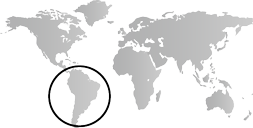Between 1810 and 1825, all the Spanish territories on the American mainland gain their sovereignty from Spain. Simultaneously, the power of the Catholic Church diminishes, including its patronage of the visual arts. During these war-torn years, cultural production declines.
These years witness political reform and the beginnings of self-fashioned societies. Caudillos (military dictators) initially fill the vacuum left by the break-up of colonial rule, including Juan Manuel de Rosas (1793–1877) in Argentina, Francisco Solano López (1827–1870) in Paraguay, and Juan José Flores (1800–1864) in Ecuador. Economically, there is a slow adaptation to the world economy.
A growing awareness of the continent’s enormous natural riches and economic potential lead technological development and an intense nationalism. Native artists take a more active role in delineating their own lands and peoples, in both popular and fine art. Even when adopting European models, however, Latin Americans inflect their work in unique ways that lay the foundation for what will eventually evolve into individual national schools.
Commercial and industrial development exacerbates class division. Immigration is also on the rise, especially in the Southern Cone. This is the era of railroad construction that accompanies the modernization of mining and plantations, and represents an alliance between foreign investors and local powers. Upper-class Latin Americans look to Europe for cultural values; artists study abroad in Italy and France, which results in the importation of academic painting and, by the turn of the century, Impressionism. As cities undergo expansion, a similar mix of French and Italian styles can be seen in the new buildings of Buenos Aires, Lima, and Rio de Janeiro.
Brazil is a colony of Portugal until 1822. The long reign (1840–89) of Emperor Dom Pedro II is marked by a commitment to education and the arts. The transition to a republic, when it comes, is peaceful. The large numbers of Africans, the heritage of a long history of slavery, mixed with Europeans and natives, creates a population distinct from Brazil’s neighboring countries.


